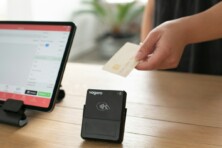In the framework of a live pilot for the country’s potential central bank digital currency (CBDC), Australia has made a historic FX blockchain transaction

Image: pixabay.com
The Australian digital dollar (eAUD) was first ever used in a trade for a U.S. dollar stablecoin using an Ethereum layer 2 blockchain.
The blockchain infrastructure provider Canvas, participating in the project, has registered the transaction on a decentralized app on Canvas’ “Connect” — an Ethereum layer 2 that uses StarkWare’s zero-knowledge (ZK) roll-up technology. The transfer was performed by crypto fund managers DigitalX and TAF Capital which traded eAUD against the stablecoin USD Coin.
According to Canvas, the transaction was settled instantly, illustrating the advantages of blockchain against the “slow, expensive and prone to errors” traditional FX and remittance networks.
The given FX trade was part of the pilot CBDC program launched in March by the Reserve Bank of Australia (RBA) in partnership with the financial research institute the Digital Finance Cooperative Research Centre (DFCRC). The project exploring possible use cases for a national centralized crypto.
Various participants of the pilot are conducting a series of tests to discover and define the opportunities of the new technology. In particular, Canvas’ test explored the use of eAUD in tokenized FX settlements. This trial can siplay the benefits of using the CBDC over fiat currencies and existing settlement platforms, such as improving transaction times, reducing fees and providing more open access.
Previously, Australia and New Zealand (ANZ) bank has established cooperation with two universities to test CBDC offline payments using smart cards, which can be loaded with funds and used as cash. ANZ bank also used the CBDC to trade carbon credits “in near real-time.”
Other institutions are also trialling numerous use cases for the proposed CBDC e.g. distribution, custody, tax automation, trusted Web3 commerce and even livestock auctions.
The pilot is scheduled to finish on May 31, with report and assessment expected on Jun. 30.
Australian banks are increasingly open to the possibilities of blockchain and crypto. It was previously reported that the National Bank of Australia will become the second of the national “big four” banks to issue its stablecoin. AUDN will work on the blockchain of Ethereum and Algorithand smart contracts. The bank plans to present a stablecoin in the summer of 2023.









